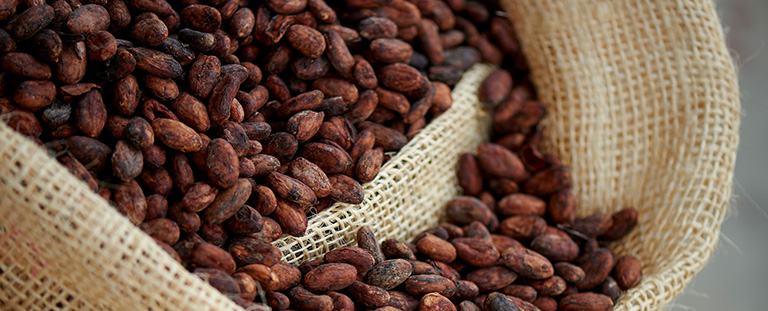From nursery to drying, an authentic savoir-faire
Growing and Cutting
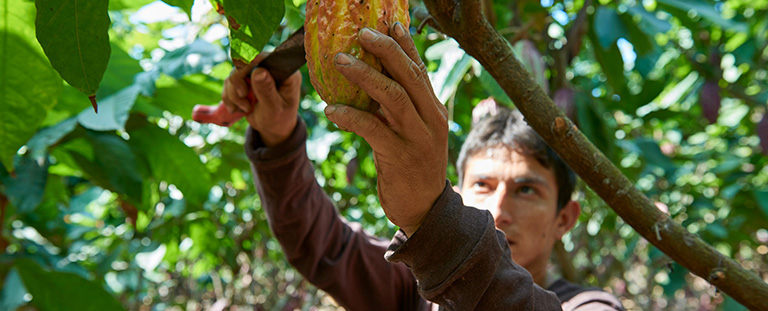
the nursery
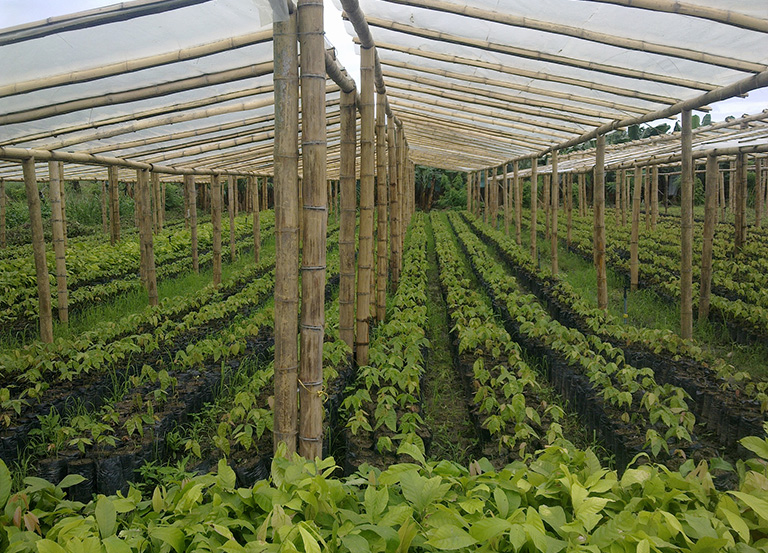
Everything starts in the nursery:
the cocoa tree is a relatively fragile plant. It requires special attention throughout its life. The young cocoa trees are first raised in a nursery. The strong brightness in the latitudes of Ecuador is reduced by protective canvases. Irrigation is perfectly controlled.
Once young adults, cocoa trees are planted on the ground among other trees. To promote good tree growth, farm teams make sure that the tree remains as open as possible.
The tree can flourish better and ensure the best possible flowering.
The flowering
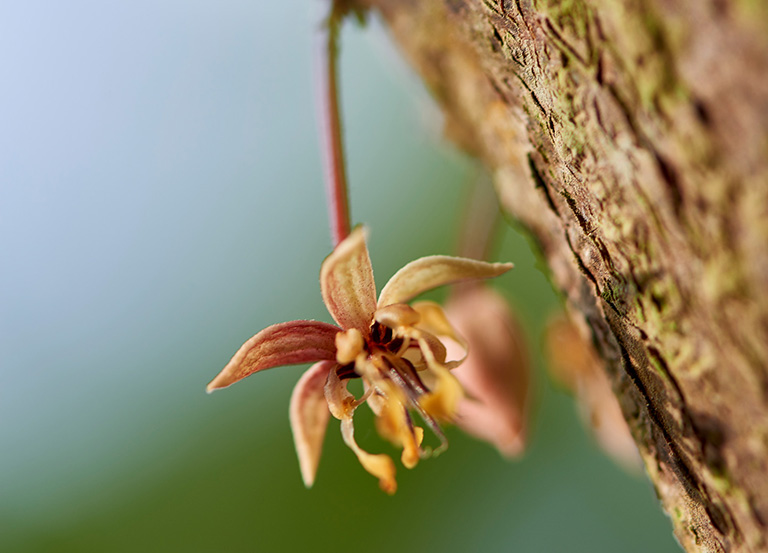
Research in cocoa has not yet revealed all its secrets: it is now estimated that it is a tiny insect present on trees that would allow the pollination of cocoa trees.
The incredible encounter between fauna and flora (pollination) allows the appearance of small flowers on the trunk. Some of these flowers will become small pods also called chérelles.
We consider that only 30 out of 1000 flowers will become pods. The valuable pods are then monitored and protected by farming teams to allow them to mature within 7 to 8 months. Throughout this period, the teams focus mainly on tree irrigation and cutting. Our employees also take care to maintain an ideal height of the tree of about 2,5 meters. In the wild, cocoa can reach 10 meters.
The cutting
Did you know that a cocoa tree takes about 4 to 5 years to fully reach adulthood? In plantation he lives about 40 years. Some cocoa trees can reach 100 years old. The color of the pod gives a fundamental indication that allows our harvesters to determine if it is mature. Picking requires a lot of dexterity to avoid hurting the tree.
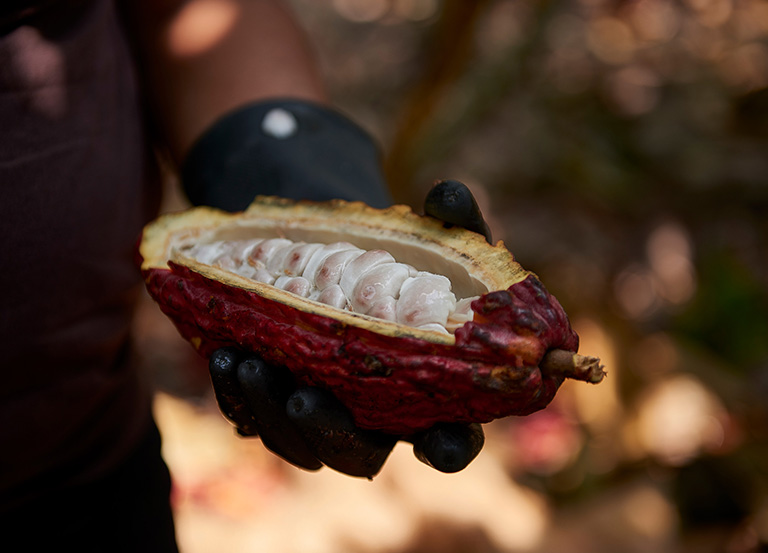
When the pod is ripe, it is picked by our harvesters who will cut it in several points and then strip it. This operation performed manually consists in removing the central vein of the pod to which the beans are attached.
The whitish beans are then transported by a zip line installed across the plantation to avoid carrying heavy loads to our harvesters.
Fermentation and drying
The picked beans then ferment for at least 3 days. The enzymes that come into action transform them literally. These then release a significant heat. This natural process is fundamental for bean transformation. Determining when to stop the process depends on our harvesters’ savoir-faire. When the beans are sufficiently fermented, they are dried in the sun for several days.
Sunshine and hygrometry are fundamental to drying. In addition, the brewing of the beans carried out by our harvesters also takes a preponderant part in guaranteeing optimal drying. This is where the aromas of cocoa grow and the natural bitterness of the beans decreases little by little.
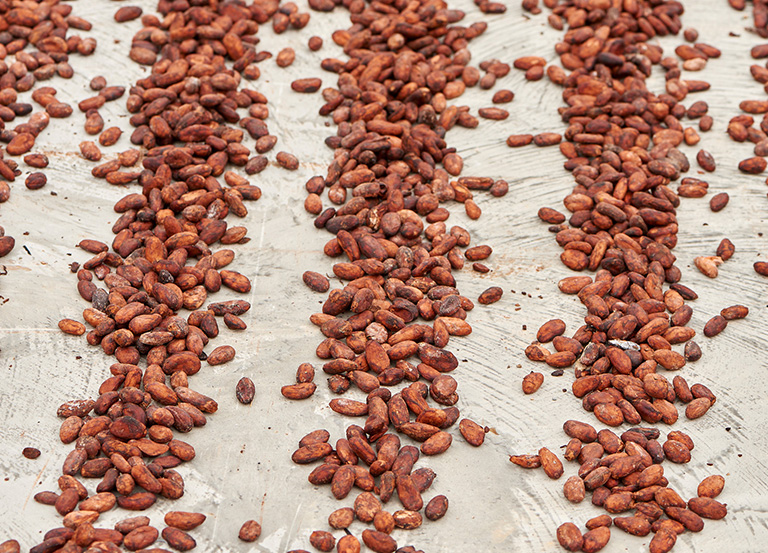
The plantation in Ecuador enjoys a strong sunshine which guarantees the optimal drying. A beautiful brown color is then revealed on the beans. Beans weighing between 1 and 1.2 grams are then calibrated and guillotined. Their degree of fermentation is evaluated according to their color.
If the quality of the bean is evaluated positively, then they are ready to leave for Europe.
The beans are now ready to cross the Atlantic Ocean for roasting. 100kg of cocoa beans will give 82.5 kg of cocoa mass.
